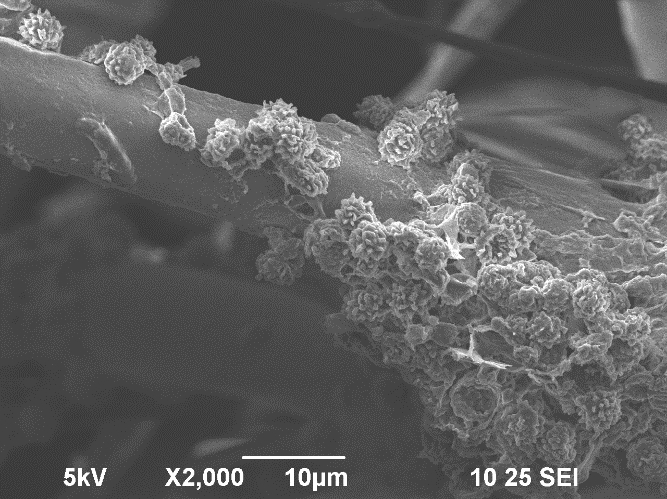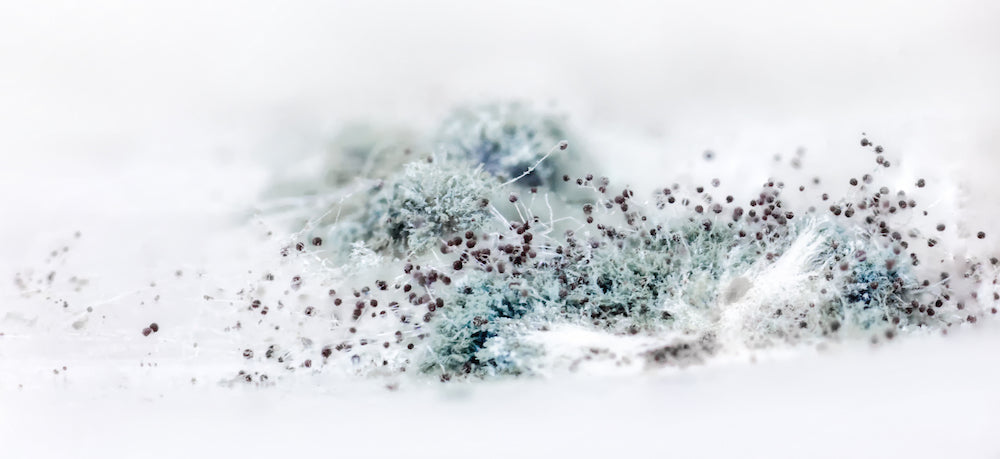Concerns about mold are likely, whether you live in an area that is humid or rainy, or deal with situations such as leaky pipes in your home. The Molekule air purifier was designed to deal with indoor air pollutants, including airborne mold spores. Here is how the Molekule works on mold spores mold and the testing results of Molekule vs. mold, as determined by third-party laboratories.
Mold in your home
Indoor mold can have an impact on your health. While not everyone reacts to mold in the same way or at all, it is possible to acquire mold allergy if you are repeatedly exposed. So if you are someone who lives indoors or is already sensitive to mold, knowing how to keep your indoor spaces mold-free is vital.
What is mold
Mold is a type of fungus. Like all fungal species, mold prefers to live in the dark undergrowth beneath trees where there is moisture to drink along with plant fibers to eat. However, not all mold species live outside. Many mold species may also grow in your home. There is no shortage of food for mold in your house. Not only is the wood made of plant fibers, but it is constantly filling with dust particles and food scraps. Combine the food with moist conditions, and mold growth is a veritable certainty.
Where is mold found
Mold grows by spreading spores, which are essentially tiny mold seeds. Mold spores are everywhere at all times, on most surfaces, in your hair, on your pets, in your carpet, and on your walls. You can find mold growing even in containers that have been closed. There are spores on everything waiting for their moment to sprout. All those dormant spores need to sprout is water to drink and a little food to eat. Within just a short time they can grow into a full-fledged colony of adults spreading more spores into the air and across every surface.

Scanning electron microscope (SEM) image of mold.
A spore’s favorite spot to grow in your home is where it can find food and water. Common places include dusty corners, underneath the windowsill where the morning dew collects, HVAC ducts, older food, and little cracks that never dry out. Once a colony has been formed the amount of mold spores in the air will skyrocket as it seeks out new places to spread.
Quick tip: It’s always good to keep an eye out for mold colonizing your home, but the three most common cases where you have to be vigilant in looking for mold growth are:
- If you live in an area that consistently has humidity over 60%
- if you have leaky pipes in your home
- if it rains for much of the year
Mold’s effect on your health
Though mold affects some of us and not others, excessive exposure to mold toxins is an established health concern. A study published by the American Journal of Public Health found that people who have mold in their homes are more likely to be depressed. While exactly how mold affects mood is unclear according to the current published science literature, it is at least apparent that seeing mold in your home and inhaling its toxins may make you less happy.
The EPA, the CDC, and the scientific community acknowledge that the inhalation of spores may cause respiratory congestion and other related issues. The toxins that are produced by mold may exacerbate asthma and even cause allergies in people who were formerly not allergic to mold.
Molekule versus mold
In addition to limiting mold’s sustenance, air purification technology can be used to prevent the spores from finding a convenient place to land. Most purification solutions like HEPA filters get rid of spores by collecting them on a filter for later disposal.

Mold growing on a filter fiber.
Molekule air purifiers have innovative technology to destroy pollutants at a molecular level. The filter fibers on Molekule’s PECO-filters are coated with a nanocatalyst.
The PECO filter has been laboratory tested to show how effective it can be when destroying mold spores. Spores from the common household mold Aspergillus niger were sprayed into an airstream which passed a single time through a PECO filter. 99.999% of the spores could not be viably recovered on the other side.
No filtration can remove the visible source of the spores where the mold is growing, so it’s important to know how to remove or get rid of the mold colony wherever it is. This usually involves killing mold with bleach, vinegar, or another cleaning agent. In extreme infestations it is necessary to completely replace the building material that has been exposed to significant mold growth.
Molekule’s PECO technology can destroy mold
Mold can be prevented in a variety of ways, including using a dehumidifier and cleaning up dusty spots in the home. But you may want to consider buying a Molekule if the specific conditions of your home might make mold growth more common. If your home has recurring or extensive water damage, old or leaky pipes, or is situated in an area with humidity regularly above 60% then mold will find it easier to start growing. Molekule can be a part of the solution in addressing air quality concerns from mold in your home.







